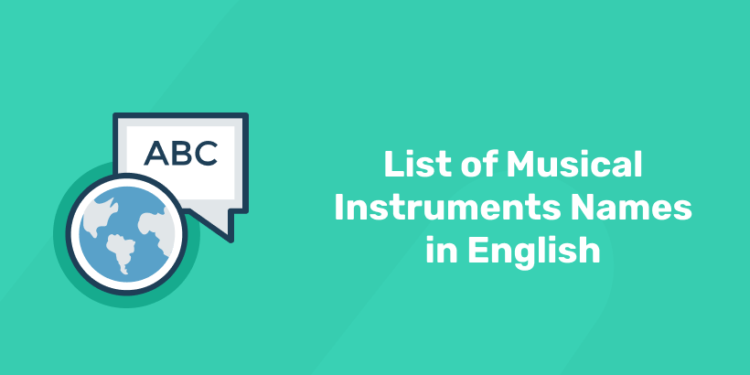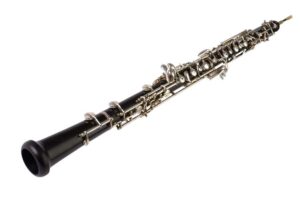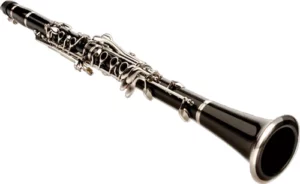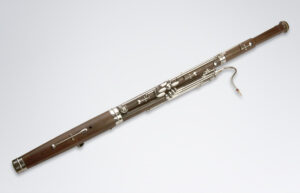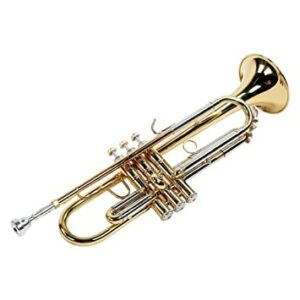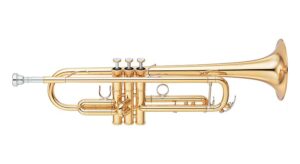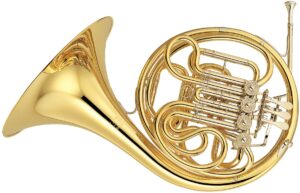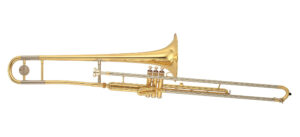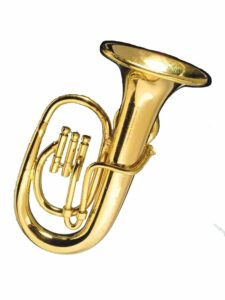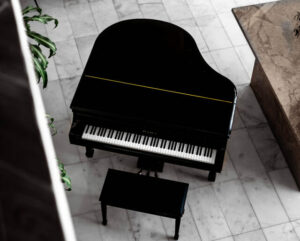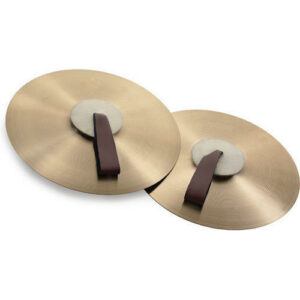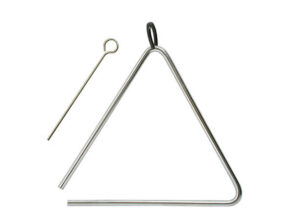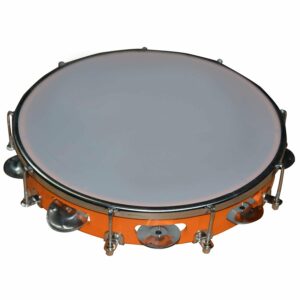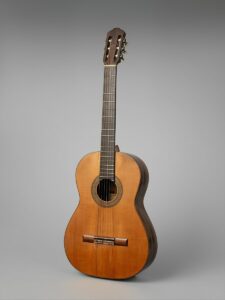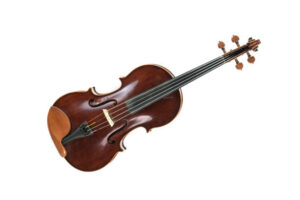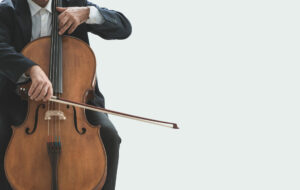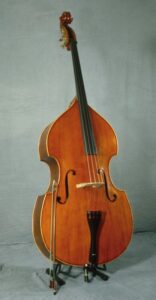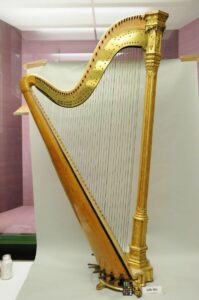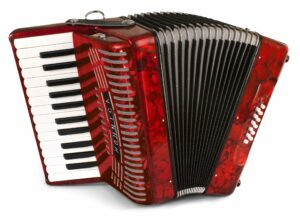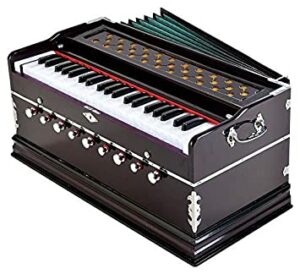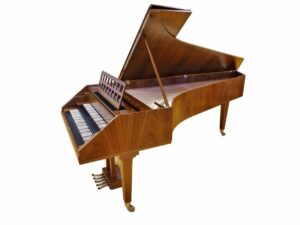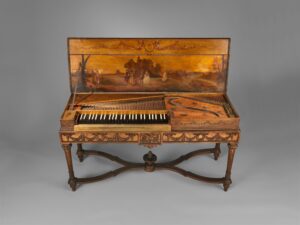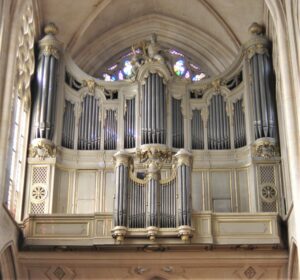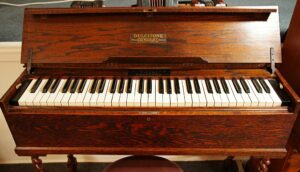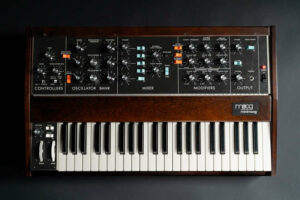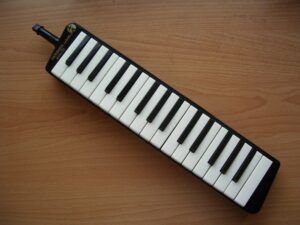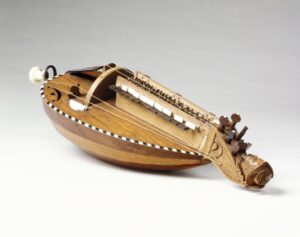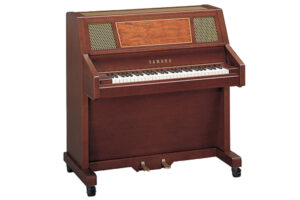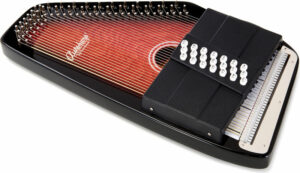Table of Contents
All of you must have heard the music, in which different melodious sounds are used with the help of instruments. First of all, let us know what is actually the definition of a musical instruments names. The instrument or device that produces the musical sound, which is now mostly based on electronics. There are different types of these instrument and the sound coming out of each is also different.
Musical instruments which can be considered as an important part of our life, because we hear the music produced from it every day. But do you know their names in English? If not, today in this article you will get complete information about it.
Musical instruments have been in use since a time when circuits or electronics had not been discovered. It was mainly used for entertainment, dance and medicine earlier. Today with the development of technology, they all work electronically, making it even easier to play and learn.
Here we provide Musical Instruments Names for your detailed reference.
Elevate your speaking skills with our Spoken English Course!
Musical Instruments Names
These Musical Instruments names will help you to understand more about the instruments. Almost 60 Musical Instruments names are provided below:
| List of Musical Instruments | |||
| Piano | Flute | Veena | Drums |
| Mridangam | Violin | Guitar | Triangle |
| Trumpet | Saxophone | Mouth organ | Cello |
| Xylophone | Clap box | Electric guitar | Bass guitar |
| Bugle | Harp | Harmonium | Oboe |
| Maracas | Cymbal | Accordion | Bongo drums |
| Bell | French horn | Banjo | Conga drums |
| Keyboard | Gong | Pipe organ | Comet |
| Tambourine | Trombone | Ukulele | Electronic drums |
| Drum pad | Clarinet | Harmonica | Tuba |
| Bass drum | Snare drum | Euphonium | Piccolo |
| Lute | Marimba | Bassoon | Cornet |
| Celesta | Spinet | Oud | Yueqin |
| Dholak | Tabla | Damru | Sarangi |
| Sitar | Gu-zheng | Ektara | Shehnai |
| Sarod | Pungi | Gramophone | Tubular Chimes |
Speak confidently and fluently with our Spoken English Course!
Different Types of Musical Instruments
The classification of musical instruments names is a disciple in its own right. There have been many classifications of musical instruments to date. Most of them have tried to classify the musical instruments based on various factors, such as their effective range, size, role, and the composition of the material used.
But, the most widely accepted classification of musical instruments is the way they produce sound. The study of musical instruments is known as organology.
If you are interested in learning musical instruments names, you must familiarize yourself with all of their types. Even if you are not interested in playing one, it is still exhilarating to explore different musical instruments.
Classification of Musical Instruments names help you to decide what kind of learning you wish to attain in the niche of music. So, here is the list of all the major classes of musical instruments names.
- Wind Instruments
- Percussion Instruments
- String Instruments
- Keyboard Instruments
1. Wind Music Instruments
As the name suggests, wind instruments use air as a medium to produce sounds of different pitches and intensities. These instruments work on the principles of waves and other useful concepts of applied physics.
In this type of musical instrument, all you need to do is blow into the musical instrument by following a defined order to produce a particular kind of sound. These instruments essentially work on the principles of sound waves, resonance, and harmonics. We can control the frequencies, and acoustics can be set and altered by changing how we blow into the instrument and what order we follow.
The length of the air column through which the sound waves are produced determines the pitch of the sound that is formed when the musician blows into the instrument.
In some wind instruments, the sound is also produced when the musician blows through a reed. Many wind instruments also require buzzing into a tiny mouthpiece. This mouthpiece is generally made of metal.
Some wind instruments also have little holes at the edges. When the musician blows into these holes, it splits the column of air inside the instrument to create a unique sound. We can produce different sounds by using different columns, one for a given tone.
We can also change the vibrating column of air in some wind instruments by changing the tube length. However, we can also produce different sounds by making the air column vibrate to varying harmonics without altering the air column’s sufficient length.
There is a wide variety of wind instruments that can be seen around the world. Some of the highly renowned wind instruments are the flute, piccolo, oboe, harmonica, English horn, bagpipe, shehnai, saxophone, shakuhachi, clarinet, and bassoon.
Elevate your speaking skills with our Spoken English Course!
Flute
The flute has been a part of the musical world for ages and was used as a means to produce high-pitched sounds. It was initially made out of wood and hollow reeds like bamboo, stone, or clay. However, flutes of today’s day and age are made out of materials like silver, gold, and platinum.
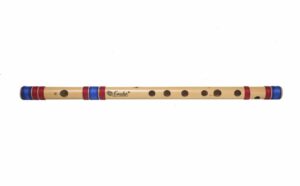
The flute can be played by holding it sideways, using both hands, while simultaneously blowing across the holes in the mouthpiece. Your fingers, which play quite an important role, are used to open and close the keys, which results in the alteration of the pitch.
There are numerous techniques by which a flute player may blow air into the instrument to produce different sounds. Two of these techniques are diaphragmatic breathing and circular breathing.
In diaphragmatic breathing, the musician can optimize his or her air intake by minimizing the number of times he/she breathes while playing the instrument. In circular breathing, musicians breathe in through the nose and breathe out through the mouth. This enables them to produce a long and continuous sound.
Piccolo, meaning “small” in Italian, is a shorter version of the flute; almost half the size of a standard flute. Piccolos are responsible for playing the highest notes amongst woodwinds. This high piping sound of the piccolo can also be heard in marching band music as well as traditional drum corps.
Oboe
This instrument is a two-foot-long black cylinder that has metal keys covering its holes. The mouthpiece in an oboe uses a double reed that vibrates as you blow through it. To play, hold it in an upright position and blow through the mouthpiece as you use both your hands to press down on the keys, opening and closing the holes to produce a range of pitches – from hauntingly beautiful melodies to velvety smooth notes – making the whole experience quite a memorable one.
Oboe
A similar instrument, called the English horn, is closely related to the oboe. The difference between these two is that the English horn’s tube is a bit longer and wider than the oboe.
The lower end of the English horn opens out into a rounded bell shape, producing a warmer and fuller sound. Its pitch is also lower than that of an oboe.
Clarinet
This instrument is oftentimes mistaken for the oboe, except for its mouthpiece, which has a single reed, unlike the oboe. Some musical compositions require the clarinetist to play several types of the clarinet in the same piece.
Clarinet
The clarinets in the orchestras are responsible for both melodies and harmonies, which essentially means that they have a rich dark sound in their lower notes while the upper notes are bright and resonant. The clarinet is played in the same manner as the oboe.
Bassoon
This woodwind instrument is a long pipe made of wood and doubled in half. The bend in the instrument makes it easier for the musicians to play. Similar to the oboe, the bassoon also uses a double reed that is attached to a curved metal mouthpiece.
Bassoon
This instrument is usually used to play the lower harmonies, but hearing their hollow notes sometimes featured in a melody is not uncommon. The bassoon can be played by holding it upright and passing air through the double reed. Similar to the oboe, your hands play the role of altering the pitch by opening and closing the holes.
Saxophone
Now, another vital instrument that falls within the category of wind instruments (as well as the next one) is the saxophone. The saxophone is a widely renowned and commonly used wind instrument.
Saxophone
It is a single-reed wind instrument that is known for its conical metal tube and finger keys. Antoine Joseph Sax patented the saxophone in the year 1846 in the city of Paris, France.
The saxophone has a conical tube, which is made from metal brass. The tube has openings that are around twenty-four in number. Padded keys primarily control these openings. There are two-octave key vents available too, which facilitate the instrument to blow to even higher registers.
The saxophone is a highly flexible instrument. It blends well with other instruments also, be it wind instruments or brass instruments. This instrument is widely used in jazz.
Speak confidently and fluently with our Spoken English Course!
Brass Instruments
The instruments falling in this category also work like wind instruments, but with a few modifications. An attractive property of these instruments is that they can be played louder than any other instrument. This is the reason why brass instruments can be heard from far away.
Brass Instrument
Brass instruments are primarily made of long pipes that widen towards the end to form a bell-like shape. The tube used in these instruments is generally twisted and formed into curves to make it easier for the musician to hold them and play.
Unlike wind instruments where the musician has to blow into the reed, brass instruments require the musician to vibrate his/her lips by placing them against a mouthpiece made of metal. The purpose of the cup-shaped mouthpiece is to amplify the lip buzzing, which ultimately creates the sound. The sound pitch can be varied by changing the lip buzzing intensity and pressing different valves constructed on the instrument.
The length of the column of air inside brass instruments can essentially be altered by using the slide mechanism, or press valves.
Trumpet
Trumpet-like instruments in their earlier stages were made using conch shells, animal horns, wood, or metal. Historically, the trumpet was used to sound alarms, gather people, and as a call of war. The trumpet is the smallest instrument of its family and is responsible for playing the highest pitches with their bright and vibrant sound.
Trumpet
The modern trumpet is essentially a slender brass pipe with three attached valves, curved and bent into long loops. Trumpets play both melody and harmony, while at the same time supporting the rhythm. To play it, you must hold the trumpet horizontally, buzzing your lips to the mouthpiece, while pressing down the three valves in a series of combinations to change the pitch.
French Horn
Unlike the above-mentioned English horn, which is neither English nor a horn, the French horn does originally come from France and is undoubtedly a horn. It is capable of producing a wide variety of sounds ranging from very soft to incredibly loud, from smooth and mellow to blaring and harsh. 18 feet of tubing in the French horn is rolled up into a circular shape that has a large bell at its very end.
French Horn
To play this instrument, you must hold it with the curve downwards whilst buzzing into the mouthpiece. Your left hand should be focused on the three valves and the type of sound can very well be changed by the way you put your right hand on the bell.
Trombone
The trombone is perhaps the only instrument in the brass family that uses a slide instead of valves to alter the pitch. Ideally, a trombone is made of long thin brass pipes.
Trombone
To play the trombone, you must hold it horizontally as you buzz into the mouthpiece and use your right hand to change the pitch. The way that you do this is by pulling or pushing the slide to one of seven different positions.
Tuba
Truly the grandfather of the brass instrument family, the tuba is inarguably the largest and the lowest brass instrument. It enchants the whole orchestra with its rich and deep sound that no other instrument is capable of producing. The structure of the tuba is a long metal tube, bent into an oblong shape, with a huge bell at the end.
Tuba
The larger the tuba, the lower the sound. The tuba is to be played sitting down with the bell facing upwards. To produce the sound, buzz into its very large mouthpiece with your hands on the valves, consciously changing the pitch of the sound.
Join our Spoken English program today and communicate with ease!
2. Percussion Musical Instruments
Percussion instruments are the musical instruments in which sound is produced by beating or scraping them using a beater, hand, or a similar instrument.
These instruments mostly include the timpani, bass drum, triangle, tambourine, and cymbals.
These instruments are broadly divided into two classes, namely pitched percussion instruments and un pitched percussion instruments.
Pitched percussion instruments are instruments that produce notes with an identifiable pitch. On the other hand, un pitched percussion instruments are the ones that produce notes with a pitch that is not identifiable. The pitch of sounds produced by such instruments is indefinite.
When the surface of percussion instruments is struck, vibrations are produced. These vibrations and their frequencies can be altered to generate the desired note.
Some examples of tuned percussion instruments are the marimba, vibraphone tubular bells, kettle drum, and xylophone. Examples of un pitched percussion instruments include the rattle, cymbals, tambourine, anvil, gong, triangle, and castanets.
These instruments are a bit tricky to play because it takes a lot of experience and practice to be able to hit the instrument with the right amount of intensity for a given tone. These instruments are widely used as they are quite melodic and make special sounds that add excitement and vibrance to the atmosphere.
Piano
There is a lot of controversy regarding whether the piano is a percussion or a string instrument. The fact that it is played by pressing its 88 black and white keys puts it in the percussion family. However, on pressing the keys, a hammer is lifted inside the piano that strikes the strings which point to it belonging to the string family.
Paino
What is undeniable is the fact that it is a finely-tuned instrument capable of playing a multitude of notes at the same time.
There will always be disputes regarding what category the piano actually fits in, but one cannot deny the fact that it is one of the most famous and easiest instruments to learn.
Many individuals who choose to take up music as their career or hobby start with a piano. Many youngsters can also be seen taking courses on how to play the piano.
Cymbals
These can be considered as the biggest noisemakers of the entire orchestra. Cymbals are two big metal discs, mostly made of spun bronze. They come in a range of sizes, but the larger the cymbal, the lower the sound that it produces.
Cymbals
Cymbals are particularly used to create drama and excitement or to create delicate sound effects. Cymbals can be played either by hitting them against each other or hitting them using sticks, mallets, or brushes.
Speak confidently and fluently with our Spoken English Course!
Triangle
This is a small metal bar bent into the shape of a triangle that makes a ringing sound on hitting it. These come in a variety of sizes and each one of them has a unique pitch.
Triangle
This can be played by holding on a string and hitting with a metal beater. The size and thickness of the beater are crucial in determining the sound that the triangle makes.
Tambourine
A small drum with metal jingles fitted onto its edges, the tambourine is a very creative instrument. To play it, you can hold it in either hand and hit, tap, or shake it with your other hand.
Tambourine
Chimes
Chimes are a bunch of metal tubes that hang from a metal frame. On striking the tubes with a mallet, they produce a sound similar to those of the ringing bells in a church. Each chime has a different pitch.
Chimes
Elevate your speaking skills with our Spoken English Course!
3. String Musical Instruments
The instruments that fall in this category consist of strings that can be vibrated to produce different sounds with varying pitches. The pitch of the sound produced via these instruments is highly dependent on the length of the air column inside the instrument. The pitch also significantly depends upon the thickness of the strings used in the instrument.
The strings in these instruments can be made from metal, silk, or fiber obtained from vegetables. The strings may also be composed of artificial materials like nylon or plastic. There is also a soundboard or a resonating chamber attached with the instruments, which fulfills the purpose of amplifying the sounds produced from the vibrating strings.
The musician playing a string instrument can either strike, pluck or rub the strings to displace them from their mean position. This displacement causes the strings to vibrate with intricate patterns and produce different sounds.
Some examples of string instruments include the guitar, violin, mandolin, cello, harp, viola, banjo, and double bass.
Guitar
A very commonly known string instrument is the guitar. The guitar is a relatively more straightforward instrument than other instruments in this category. It is primarily played by plucking or vibrating the strings.
Guitar
The guitar is composed of a body, the soundboard, the headstock, and the strings. The material used for making guitars is usually plastic or wood and their strings are made of nylon or steel.
The strings of the guitar can be vibrated using the fingers or the fingernails. The instrument is played using the right hand for right-handed players and likewise for the left-handed players. One hand is used for vibrating the string, and the other hand is used for holding the guitar.
There is abroad classification of guitars based on how they are made and the kind of music they produce. Traditional guitars usually have a hollow body that makes the vibrations and the sounds louder and improves the guitar’s quality.
Guitars are usually composed of six strings, but many guitars can be seen with four, seven, ten, or even twelve strings. The fullness of the sound produced by the guitar increases with an increase in the number of strings it has.
The guitar is the first choice of youngsters who wish to learn musical instruments as either their hobbies or full-time careers. Many teenagers can be seen taking classes for this musical instrument. Youngsters can also be seen playing the guitar on streets, shopping malls, and in parks.
Violin
Another commonly used instrument which falls in this category is the violin. Sometimes violins are also referred to as fiddles.
Violin
Violins have a hollow body. Instruments with hollow bodies usually have an excellent quality because this hollowness ensures fullness in the instrument’s sound.
The body of a violin is made of wood. As the violin is the smallest member in its family, it has the highest pitch of all. Violins usually have four strings.
Nowadays, electric violins have made their way into the world of musical instruments too. But the beauty of traditional violins still remains intact.
In an orchestra, violins can be divided into two categories. The first violins play the melodies, while the second violins shift between melody and harmony.
The violin can be played by resting it between your left shoulder and chin. Your left hand will hold the neck of the violin and press on the strings which will result in a change in pitch, as your right hand plucks the strings or moves the bow.
Viola
If the violin is the baby, the viola can be considered its older brother or sister. It isslightly larger than the violin and has thicker strings, which produce a warmer and richer sound. The viola can be played in the same way as the violin by resting it between your left shoulder and chin and using your right hand to pluck the strings or move the bow.
Viola
Cello
The cello might look like the violin or the viola, but it is much larger (about 4 feet long). It also has thicker strings. Keeping all the string instruments in mind, it can be said that the cello makes a sound that closely resembles a human voice and is capable of producing a variety of tones – warm low pitches to bright higher notes.
Cello
The way you play the cello is by resting its body on the ground and supporting it with the help of a metal peg. Then, you use your hands to pluck the strings or move the bow, as in the case of the violin or viola.
Double Bass
This can be considered as the grandfather of the string family. 6 feet long, and therefore the largest with the longest strings, the double bass is perfect in case you want to play very low notes. Due to their massive size, you need to stand up or sit on a very tall stool to play it.
Double Bass
Like the cello, the double bass’ body is to be rested on the ground and supported by a metal peg, and the left hand is used to move the bow or pluck the string.
Harp
This musical instruments ands out from the rest undoubtedly. Standing tall at about 6 feet, it is shaped like the number 7 and consists of 47 strings of different lengths. Harps play both melody and harmony.
Harp
To play the harp, you must sit down with your legs on either side, as the neck of the harp is rested on your right shoulder. Each string makes a different sound and the way you play it is by plucking the strings with your thumb and fingertips. Seven foot-pedals are attached to the bottom of the harp which help to change the pitch of each string.
Speak English like a native ! join now !!
4. Keyboard Musical Instruments
Piano
While the Piano is the most famous of the keyboard instruments, it’s not the first. The piano is a more modern reinvention of the harpsichord, which is still around and will be featured later on in this list.
Piano
However, the piano is by far the most played keyboard instrument. The modern piano has 88 keys and is played sitting down.
Originally, it was created to solve the musical problem of dynamics—musicians couldn’t control how loud or quiet their music was.
The piano was initially called the pianoforte, the common musical term for “soft” and “loud” (since it could do both). Now, it’s just called a piano.
Accordion
Although it’s not usually thought of as a keyboard instrument, the Accordion does deserve a spot on this list!
Accordion
It is a classic portable instrument created in Germany. The accordion works like a tiny organ, using air, stops, and a keyboard to control the sound.
However, unlike an organ, it doesn’t use pipes. Instead, the instrument itself acts like a bellows.
Accordions are often used in polka and traditional European dance music. It’s technically a member of the wind instrument family (but the piano is technically a percussion instrument). Accordions are usually handcrafted and can be extremely expensive.
Harmonium
A Harmonium is a lesser-known cousin of the accordion. It works much the same way—blowing air through the instrument while controlling the sound with a keyboard.
Harmonium
However, the harmonium has two main differences: the method of air pumping and the size of the instrument.
A harmonium is like a small upright piano but with two large pedals. The air is blown upwards through the instrument’s reeds to create sound, which is then controlled by the keys.
It’s simpler than the accordion because there are no “stops” to control. However, a harmonium is much quieter and bulkier.
Harpsichord
We’ve already referenced the Harpsichord as a parent of the modern piano. Physically, it looks very similar to an upright piano, only smaller.
Harpsichord
The significant difference between a harpsichord and a piano is how the sound is made. While a piano’s keys are attached to hammers, a harpsichord’s keys are attached to hooks.
These hooks pluck the strings within the instrument instead of hitting them.
It makes a characteristic sound found on many Baroque instrumental pieces and requires technical precision. However, the musician can’t control dynamics, and the instrument has one volume: loud.
Clavichord
If a harpsichord is the mother of the piano, the Clavichord is the father. It looks much less similar but still operates with a keyboard.
Clavichord
The main difference between a clavichord and a harpsichord is the strings are struck by metal rods instead of plucked by hooks.
Similar to the harpsichord, the clavichord had one central issue: dynamics. While you could control how hard you hit the keys, the instrument is too small to make enough sound in a large concert hall.
Clavichords only had a few octaves and were primarily used in the home for practice or composition.
Pipe Organ
Before the clavichord or the harpsichord, however, was the Pipe Organ. The original keyboard instrument, variations of the organ have been around for over two thousand years.
Pipe Organ
The instrument pushes air through various pipes to make music using pedals, while the dual keyboards and a series of stops open and shut the pipes.
The pipe organ is used in large venues such as baseball stadiums, churches, and concert halls because it doesn’t need amplification to reach the back rows.
Dulcitone
The Dulcitone is a somewhat unique take on the clavichord, developed in the 1800s. It borrows part of its name and design from the hammered dulcimer, which utilizes padded hammers hitting a string.
Dulcitone
However, the dulcitone attaches these hammers to a keyboard in a portable version of the clavichord.
The dulcitone is a quiet and high-pitched instrument, generally only spanning four or five octaves.
While the dulcitone had its uses, it was often replaced by a louder, sharper-sounding percussion instrument such as a xylophone or a glockenspiel.
Synthesizer
Other than the piano, the Synthesizer might be the most popular keyboard instrument on this list. It’s different from an electric keyboard, however.
Synthesizer
While both plug into a wall and look like a smaller version of a regular piano, synthesizers have varying functions and are capable of many different sounds.
A synthesizer makes tones electronic instead of manual. While a piano hits an actual hammer to a string, synth copies that noise with an internal computer.
If you hook a synth up to an external computer, there’s no end to the number of different sounds it can make.
The classic “synth” or electric keyboard sound, however, is well-known in classic rock.
Melodica
The Melodica is one of the newer instruments on this list. Although variations have been around for almost two hundred years, the modern (and most popular) version was invented in the 1950s.
Melodica
It was made popular in reggae and ska music in the 1970s and 1980s. Think of the melodica as a recorder, but with a keyboard on top instead of openings.
It works the same way, with the musician blowing air through a top hole and controlling the sound by “stopping” specific openings.
The difference is that instead of directly seeing the holes, the musician is using the keyboard placed over the center tube.
Claviola
The Claviola is another twentieth-century hand-held keyboard that you blow into. Unlike the melodica, however, the claviola is no longer in production.
Claviola
It was only made for a few years in the 1960s and is increasingly hard to find. It looks similar to an accordion and is held the same way but is easier to play.
The claviola works like a combination of the accordion and the melodica. The user blows through a pipe on the top of the instrument while playing the keyboard on the side.
On the opposite side of the keyboard, there are multiple pipes to correspond to the keys. The air brings the sound, and the keys control it.
Hurdy-Gurdy
If nothing else, this instrument has the most entertaining name on the list. The Hurdy-Gurdy.
Legends say that it came from the somewhat warbly sound that the instrument has when it starts.
Hurdy-Gurdy
There are a variety of hurdy-gurdies, but they all sound like a combination of an accordion and a violin. The hurdy-gurdy looks like a violin with a crank on the bottom and a keyboard along the side.
So although it’s technically a stringed instrument, it fits right in with the widespread family of keyboard instruments.
As the musician cranks the instrument and plays the keys, they slide over the strings to make the music.
Celeste
One of the more unique keyboards on this list, a Celeste, works similarly to a regular piano.
Celeste
However, instead of the hammers hitting strings to create the signature piano sound, the hammers of a celeste hit sound plates directly above wooden resonators. The resulting sound is a bell tone.
The celesta looks like a smaller version of a regular piano and is often played by a pianist. However, the difference in sound makes the celesta sound almost magical.
Join our Spoken English program today and communicate with ease!
Autoharp
The Autoharp is what happens when a hammered dulcimer and an accordion have a child.
Half of the instrument is strings pulled tightly across a wooden soundboard. The player plucks these strings with fingers or a pick.
Autoharp
A keyboard covers the other half and mutes all the strings except when the keys are depressed.
This combination of string and keyboard instruments leads to a very soft, controlled sound.
Unlike many of the other keyboard instruments, the autoharp sounds much more like a stringed instrument (unsurprisingly, it sounds a lot like a small harp).
It can be played flat on a table (like a keyboard) or upright (like a harp).
Virginals
Lastly, we have a Virginal. If we’re continuing with the family analogy, virginals (which often came in two and were called a pair of virginals) are the grandmother of the harpsichord.
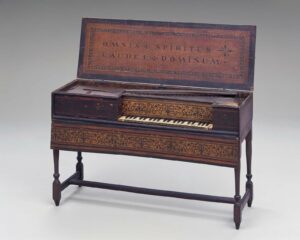
The instrument works much the same way; it uses keys to pluck strings. However, it’s slightly smaller than the harpsichord.
The main difference between a harpsichord and a virginals is that the virginals are a pair of keyboards, each called a virginal.
Speak confidently and fluently with our Spoken English Course!
All the names given here are of popular Musical Instruments names. However, there are more instruments in the world than this list, but it is not possible to include all of them in this list. As far as I think, 40+ Musical Instruments are enough for you.
FAQs
1: Which of the sentences below is grammatically correct?
Which is the most popular musical instrument in the world?
Piano and guitar are the most popular musical instruments in the world, which are played by many people on a daily basis.
Which is the most used musical instrument?
Piano or keyboard is the most used in the world, it’s tune is definitely used in all the songs or music of today.
Which is the most expensive musical instrument in the world?
“MacDonald Stradivarius Viola” is the most expensive violin in the world, which is worth 45,000,000 US dollars. Although I do not know all about it.



